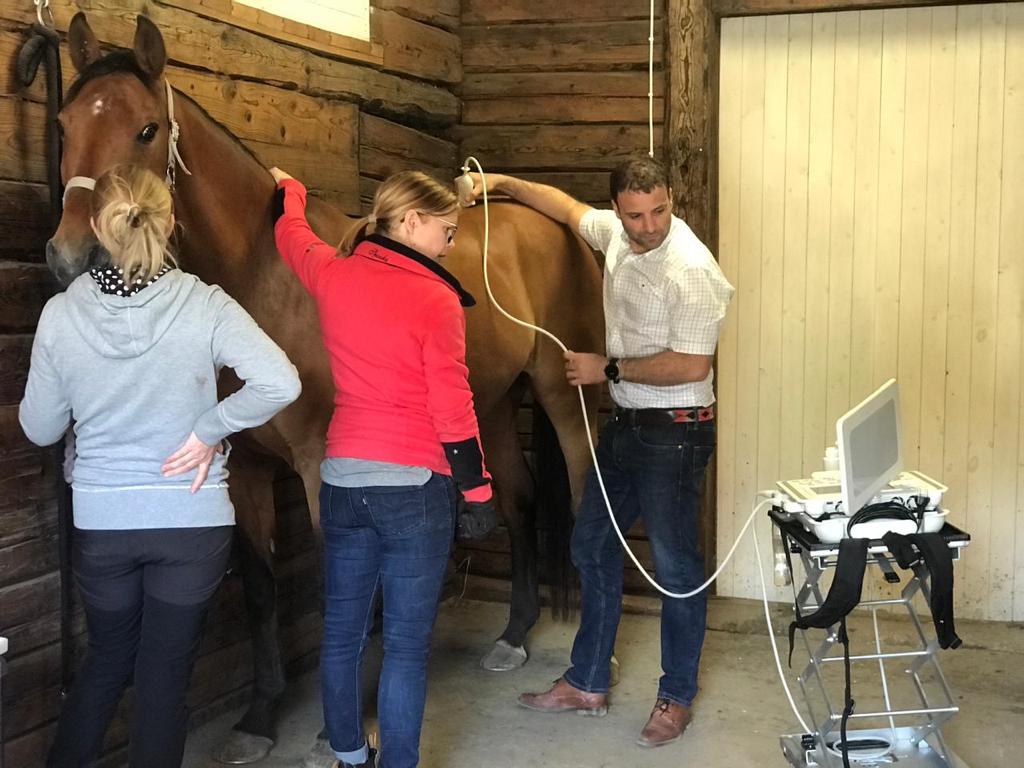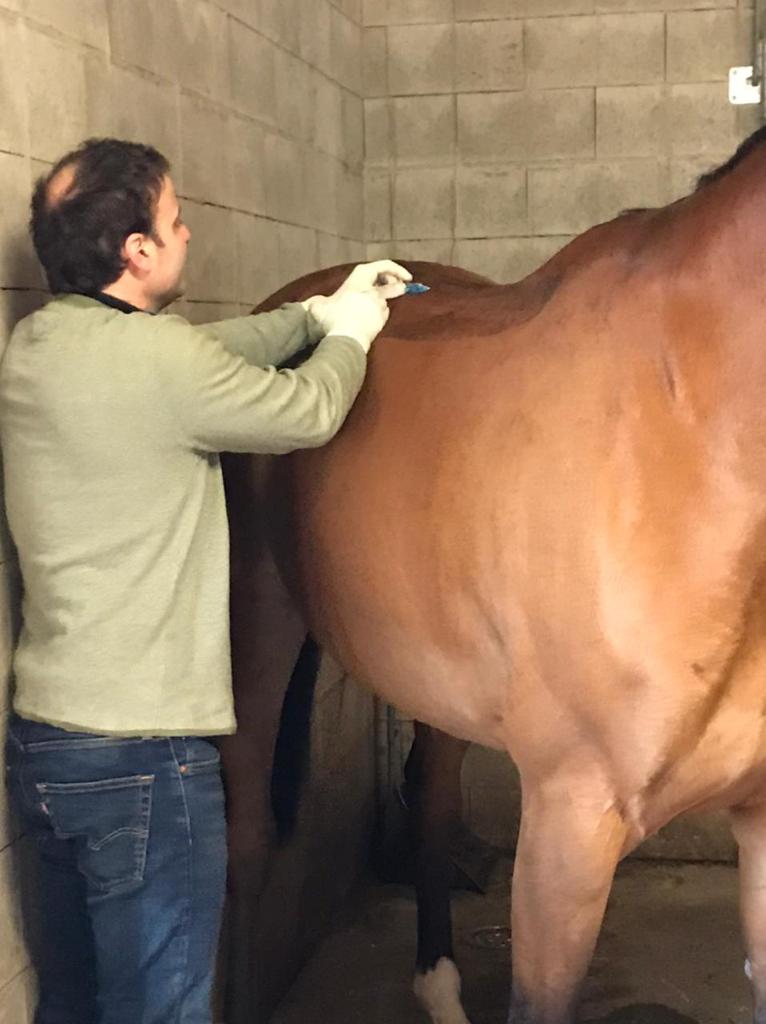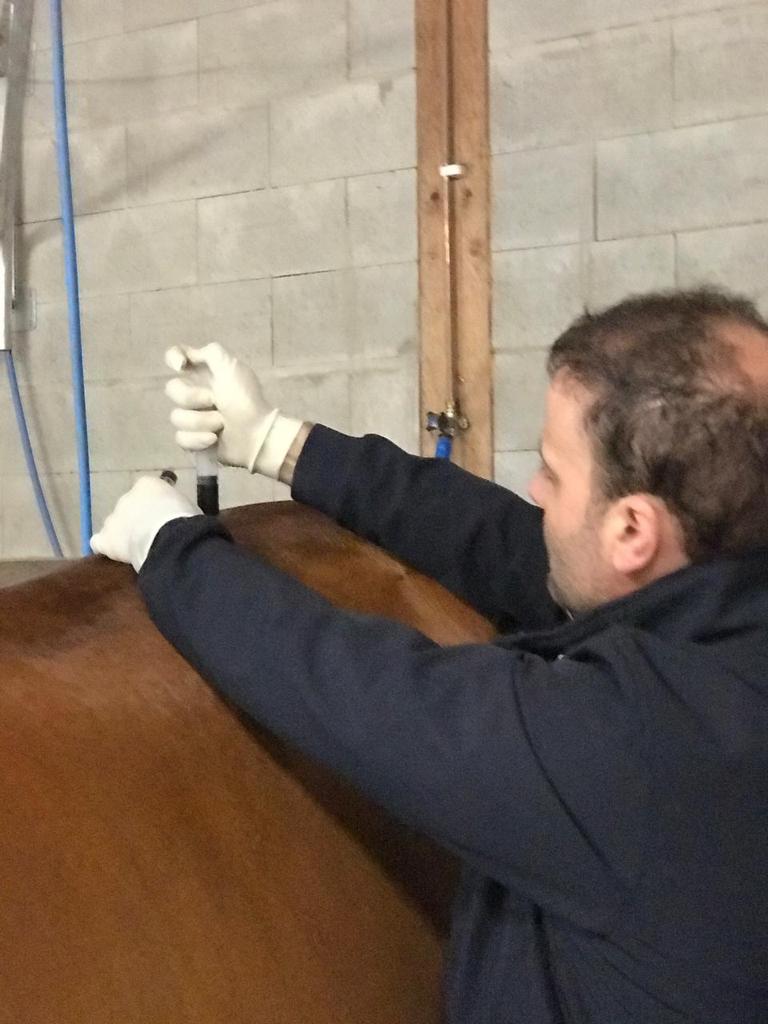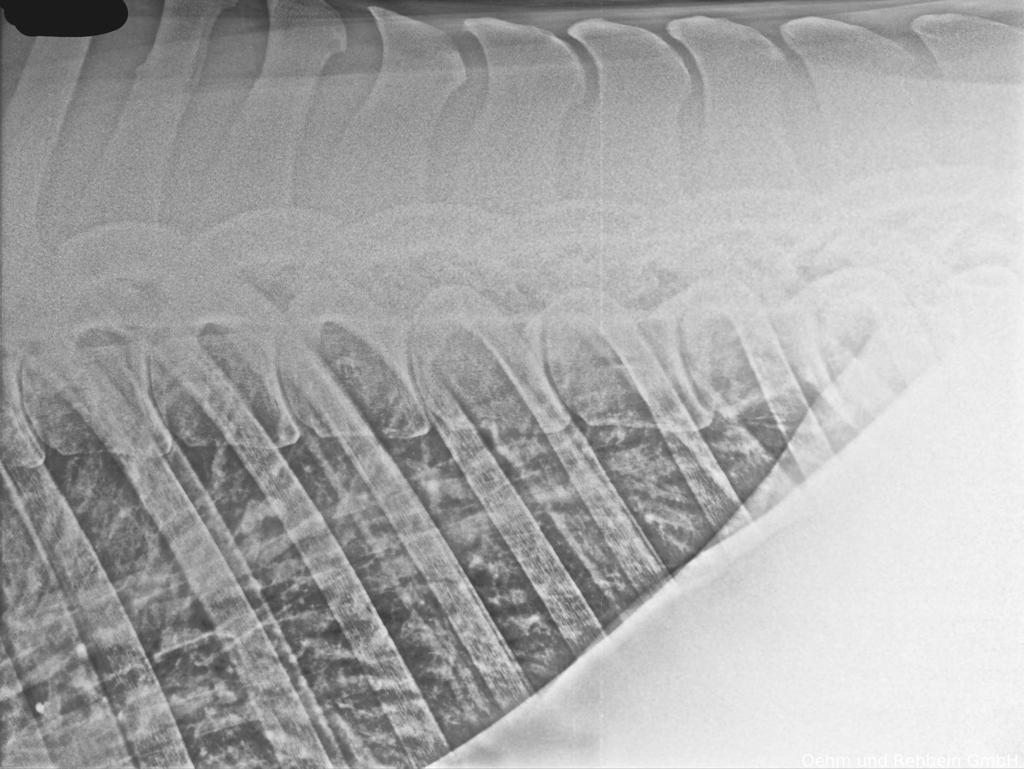Osteoarthritis in lumbar vertebrae joints can affect the musculature of show jumping horses in various ways. Osteoarthritis is a degenerative joint disease that involves the wear and tear of the articular cartilage and inflammation of the surrounding tissues. When it affects the joints of the lumbar vertebrae, it can have the following effects on the muscles:
- Pain and stiffness: Osteoarthritis can cause pain in the lower back joints, leading to greater muscle stiffness in the affected area. The muscles near the involved joints can become tense and stiff as a protective response to pain.
- Muscular atrophy: Chronic pain and limitation of movement can lead to muscular atrophy in the muscles of the lower back. Lack of proper use of weakened muscles can lead to a decrease in their size and strength, negatively affecting the horse’s athletic performance.
- Changes in biomechanics: Osteoarthritis in the lumbar vertebrae can alter the normal biomechanics of the spine and affect muscle coordination and balance. This can lead to muscle imbalances and compensation in other areas of the horse’s body.
- Decreased performance: The presence of osteoarthritis and the resulting muscle weakness can affect the performance of the horse in show jumping. There may be a decrease in the ability to jump with force and precision, as well as difficulties maintaining correct posture and stability during jumps.



It is important to note that osteoarthritis is a chronic and progressive disease, and the effects on the musculature may vary depending on the severity of the condition and the individual response of the horse. A comprehensive management approach that includes pain control, physical therapy, and rehabilitation, as well as adjustments to the training program, can help mitigate the negative effects of osteoarthritis on the horse’s musculature.









No Comments